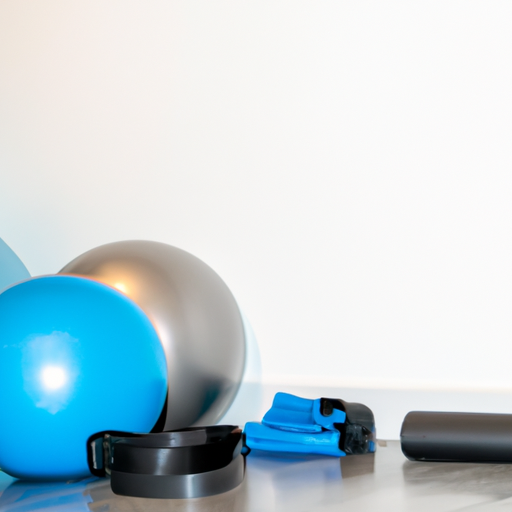
The Benefits of a Full-Body Workout Routine for Beginners
Starting a fitness journey can be daunting, but opting for a full-body workout routine is a fantastic way to ease into the world of beginner strength training. This approach optimizes your exercise schedule, offers versatility, and delivers a host of benefits both physically and mentally. Whether you're new to working out or just brushing up on the basics, let's explore why a full-body workout routine is perfect for budding fitness enthusiasts.
Why Choose a Full-Body Workout?
Before jumping on the treadmill or grabbing those weights, it's important to understand why a full-body workout is a stellar choice for beginners:
- Efficiency: By working all muscle groups in a single session, you maximize your time at the gym, getting more done in less time.
- Balance: Ensures no muscle group is left behind, promoting symmetrical strength and avoiding the “I-skipped-leg-day” syndrome.
- Simplicity: Especially for beginners, having a straightforward plan reduces the confusion and anxiety about which exercises to do each day.
Benefits of a Full-Body Workout
A full-body workout comes with an impressive array of benefits, some of which might just surprise you:
Improved Muscle Strength and Tone
Engaging in beginner strength training through full-body workouts helps to build muscle mass efficiently. Every major muscle group gets its fair share of attention, enhancing overall muscle tone and definition. Even better, by sticking to compound exercises like squats, deadlifts, and rows, you're not just working multiple muscles, you're also giving Father Time a run for his money by ramping up your metabolism.
Increased Metabolic Rate
Speaking of metabolism, it's worth noting that full-body workouts can actually increase your Resting Metabolic Rate (RMR). This means you’ll burn more calories even when you’re not exercising. That’s right, your post-workout Netflix binge just got a little more rewarding — or at least a lot less guilt-ridden.
Enhanced Heart Health
Full-body workouts aren't just about muscles. By incorporating them into your fitness routine, you’re also doing wonders for your cardiovascular health. Exercises that engage larger muscle groups turn up the heat on your heart rate, giving you a two-for-one special on muscle gains and heart benefits.
Better Flexibility and Coordination
While strength is a focus, flexibility and coordination are often sneaky sidekicks that tag along for the ride. As you practice your workouts, your body's range of motion and balance tend to improve, reducing the risk of injuries and everyday clumsiness. Say goodbye to tripping over nothing in particular.
Components of an Effective Full-Body Workout Routine
With the benefits covered, let’s dive into what makes an effective full-body workout routine:
- Warm-Up: Always start with a 5-10 minute warm-up. This could be a brisk walk, light jogging, or jumping jacks to increase your heart rate and prepare your muscles.
- Strength Exercises: Focus on compound movements like squats, lunges, push-ups, and dumbbell rows. Aim for 8-12 reps of each exercise in 2-3 sets.
- Cardio Component: Incorporate short bursts of high-intensity activities like burpees or mountain climbers.
- Cool-Down: Finish with stretching exercises to enhance flexibility and aid recovery.
Beginner Strength Training Tips
Venturing into beginner strength training is exciting, but here are some tips to ensure your journey is smooth and injury-free:
- Start Slow: It's tempting to dive in headfirst, but building strength takes time. Gradually increase weight and intensity to avoid overexertion.
- Focus on Form: Proper form is crucial to prevent injuries. Don't be afraid to start with little or no weight as you master techniques.
- Rest and Recover: Your body needs time to repair and grow stronger. Incorporate rest days to allow adequate recovery.
Keeping Motivation Alive
Sticking with a fitness routine requires motivation (and maybe a good playlist). Here’s how you can keep going without fizzling out:
- Set Realistic Goals: Short-term, achievable goals are great for boosting confidence and keeping motivation high.
- Track Progress: Keep a log of weights, reps, and sets to track improvement and celebrate successes.
- Mix Things Up: Avoid plateau by incorporating new exercises or occasional fun classes.
- Find a Workout Buddy: Sharing your journey with a friend can provide support, encouragement, and a handy spotter.
Frequently Asked Questions About Full-Body Workouts for Beginners
How often should I do full-body workouts?
For beginners, 2-3 times a week is ideal, allowing rest days in between sessions for recovery.
Do I need equipment to start?
No fancy equipment is required! Bodyweight exercises are quite effective, though adding dumbbells or resistance bands can increase the challenge as you progress.
Can I do full-body workouts at home?
Absolutely! With a set of weights, a yoga mat, or even your own body, you can perform a comprehensive full-body workout from the comfort of your living room. Just avoid letting the couch lure you into a “nap-focused” workout.
Embrace the Full-Body Workout Lifestyle
A full-body workout routine is not just a beginner's entry point into fitness but a compelling way to maintain interest and build overall body strength. By focusing on comprehensive muscle engagement and balanced routines, this approach often leads to more measurable results and sustained fitness gains. Plus, what could be better than the flexibility of working every muscle without having to live in the gym?
So lace up those sneakers and get ready to tackle your full-body workout with confidence — your future, fitter self will thank you!
